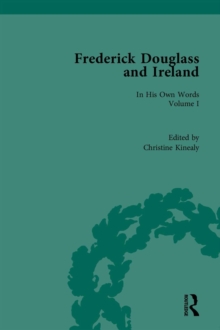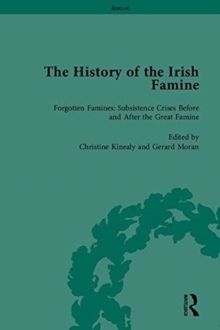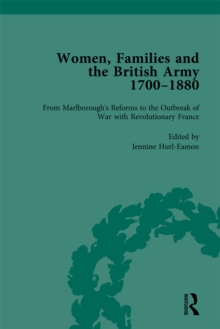
Women, Families and the British Army, 1700-1880 Vol 4 PDF
by Jennine Hurl-Eamon, Lynn MacKay
Part of the Routledge Historical Resources series
Description
This series concentrates on women and the soldiers in the ranks whose lives they shared, assembling a wide body of evidence of their romantic entanglements and domestic concerns.
The new military history of recent decades has demanded a broadening of the source base beyond elite accounts or those that concentrate solely on battlefield experiences.
Armies did not operate in isolation, and men’s family ties influenced the course of events in a variety of ways.
Campfollowing women and children occupied a liminal space in campaign life.
Those who travelled "on the strength" of the army received rations in return for providing services such as laundry and nursing, but they could also be grouped with prostitutes and condemned as a ‘burden’ by officers.
Parents, wives, and offspring left behind at home remained in soldiers’ thoughts, despite an army culture aimed at replacing kin with regimental ties.
Soldiers’ families’ suffering, both on the march and back in Britain, attracted public attention at key points in this period as well. This series provides, for the first time in one place, a wide body of texts relating to common soldiers’ personal lives: the women with whom they became involved, their children, and the families who cared for them.
It brings hitherto unpublished material into print for the first time, and resurrects accounts that have not been in wide circulation since the nineteenth century.
The collection combines the observations of officers, government officials and others with memoirs and letters from men in the ranks, and from the women themselves.
It draws extensively on press accounts, especially in the nineteenth century.
It also demonstrates the value of using literary depictions alongside the letters, diaries, memoirs and war office papers that form the traditional source base of military historians. This fourth volume covers the period from the Treaty of Paris to the Declaration of War in 1854.
Information
-
Download - Immediately Available
- Format:PDF
- Pages:404 pages
- Publisher:Taylor & Francis Ltd
- Publication Date:10/03/2020
- Category:
- ISBN:9781000028768
Other Formats
- EPUB from £153.00
- Hardback from £170.00
Information
-
Download - Immediately Available
- Format:PDF
- Pages:404 pages
- Publisher:Taylor & Francis Ltd
- Publication Date:10/03/2020
- Category:
- ISBN:9781000028768










